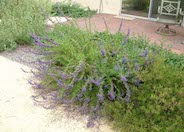
Common name: Woolly Blue Curls
Botanical name: Trichostema lanatum
Woolly Blue Curls is an evergreen shrub that reaches 3'-5' high. It has an open branching habit and has long stalks of brilliant purple woolly flowers in the spring and summer. This California native, is drought tolerant, and attracts hummingbirds. It puts on a dramatic display of purple stealing the show when in bloom. This is a highly prized compact, medium sized shrub that produces breath-taking deep purple to blue flowers. This shrub prefers minimal watering after establishment, well drained soil and plenty of sun. It naturally occurs below 2000' ft. Woolly Blue Curls grows fast, reaching about 4 ft in height and the same in width. The leaves are needle like, thick skinned points that are a light to dark green. The spring and summer flowers are loved by bees, hummingbirds, butterflies, and a favorite of Native gardeners. This very hardy, drought tolerant native was extremely important to indigenous Americans, who used almost all parts of the plant for medicinal uses, especially for stomach ailments. Indeed, it became so important that it was used as a currency at times. Tea made from sprigs of Woolly Blue Curls is also extremely tasty, with a soothing, calming effect.
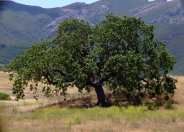
Common name: Coast Live Oak
Botanical name: Quercus agrifolia
The Coast Live Oak is an evergreen, round-headed tree with regal bearing. It can reach 25'-80' high and 25-40' wide and grows very well from the coastal areas to the interior valleys. Strong herculean branches adorn mature trees casting much appreciated summer shade. It attracts wildlife in droves.
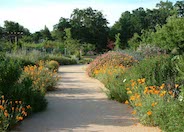
Common name: Mexican Gold Poppy
Botanical name: Eschscholzia mexicana
Mexican Gold Poppy is similar to the California Poppy, with exception to the foliage (but difficult to distinguish). It has cup-shaped, fragrant, four petaled yellow orange blooms. It grows to 8" high and spread about 12". However, this plant does self sow. Foliage is finely divided, gray green and attractive. Considered an annual in coastal areas but will come back every winter through spring in warmer areas. It prefers full sun with well draining soil. Poisonous plant.

Common name: Howard McMinn Manzanita
Botanical name: Arctostaphylos densiflora 'Howard McMinn'
This shrub is highly appreciated for its decorative characteristics, which include a dense show of small, pale pink urn-shaped flowers in winter and spring. One of its main often overlooked attractions of this plant is the mahogany-red to brown bark (which peels beautifully) that can be revealed with some internal pruning once the plant is mature . It's small, red fruit resembles the tike apple, appearing at the end of winter just as Spring is coming on. Evergreen, shiny leaves are very neat and tidy. It can reach 8' tall and 10 wide. It can be pruned to desired size. This shrub attracts butterflies and hummingbirds. It does best in full sun in coastal areas and afternoon shade in warm, inland areas with well draining soil. Established plants need little or no water in coastal areas and occasional watering in warmer areas.
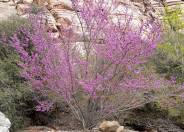
Common name: Western Redbud
Botanical name: Cercis occidentalis
This deciduous shrub or small tree reaches 15' tall and 10' wide. Beautiful magenta flowers appear in spring, before the leaves appear. Foliage is apple green, turning yellow to red in the fall. Seed pods dangle on this tree in winter. Western Redbud prefers full sun but will appreciate afternoon shade in desert areas. It needs well draining soil. It is drought tolerant once it's established. It attracts hummingbirds and butterflies. A tree of varying interest all year round!
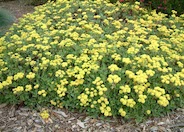
Common name: Sulfur Flower
Botanical name: Eriogonum umbellatum
This plant is a low, woody perennial growing 1'-2' high with a 3'-4' spread, having dark green/gray foliage. Attractive yellow flowers appear in summer. It is a CA native that is drought and cold tolerant. It attracts butterflies and beneficial insects. This plant does best in higher elevations and cold areas. It does well in full to part sun but needs very good drainage.